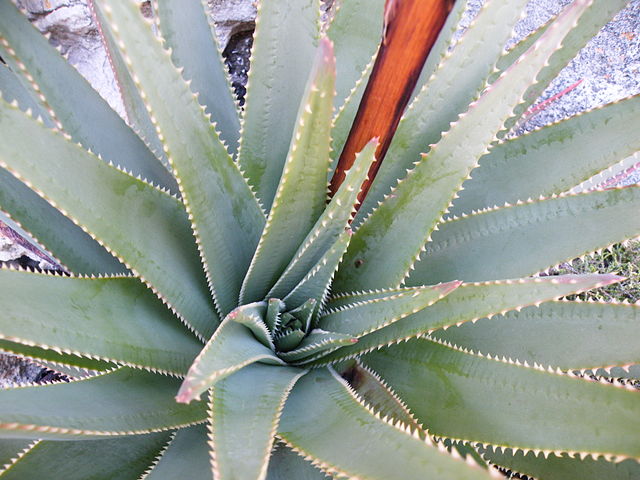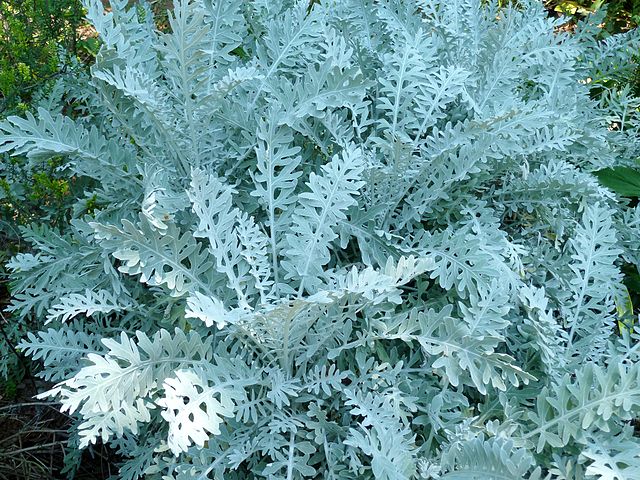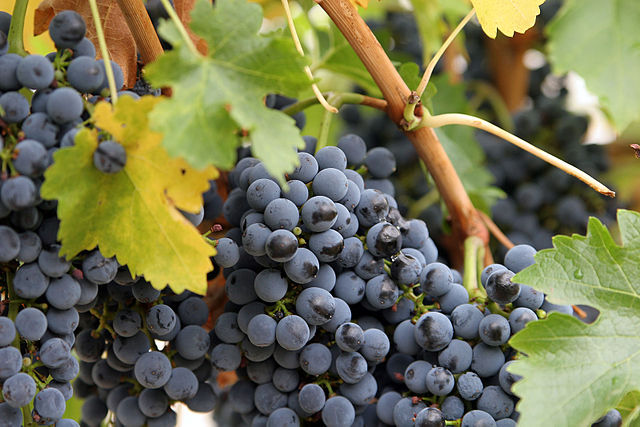Glaucous, the Greeny Blue of Epic Poetry and Succulents
Cultural histories of unusual hues.
.
.
.
.
.
.
.
.
.
In the first season of the television show “Fargo,” the villain, Lorne Malvo, played by Billy Bob Thornton, asks the bumbling police officer (who is slowly cottoning to Malvo’s whole slick hit man shtick) a disorienting question: “Did you know the human eye can see more shades of green than any other color?” He presents this query as a riddle. Once the policeman knows the answer, Malvo suggests, he’ll be able to figure out what is happening in his small town. He doesn’t catch on—at least, not until a female cop (the season’s protagonist) spells it out for him. People can see many shades of green, she says, because of predators. Back when we were monkeys in the jungle, the story goes, we developed the ability to distinguish between greens so we could avoid the apex predators hiding in the foliage.
It’s a neat plot device, and it helps cement the various characters into their roles. And for the show’s purposes, it hardly matters that Thornton’s character is misrepresenting how human eyes work. (We don’t actually perceive more shades of green, but our brains are better at distinguishing between various shades of green than other colors.) But this tense little bit of screenwriting bothered me because it seemed to contradict something I knew about language and color. This story of predators and green-seeing prey suggested that the most significant color in human history was green—that green could somehow deliver us from death. But green was never our primary color. According to the Berlin-Kay theory of basic color terms, when people began to create words for colors, they didn’t start with jungle shades or leafy hues, as one might expect. They began with words to differentiate between light (gleaming) and dark (shadows). When these early humans did add a first color to the lexicon, it was almost always red. Green came later, and sometimes, it didn’t come at all.

By Abu Shawka – Own work, Public Domain, Link
Ancient Greek didn’t distinguish between green and blue (they called them both glaukos). Old and Middle English used one word (glas) for green and blue, as did ancient Japanese (ao). Korean and Vietnamese speakers tend to use the same word to talk about green and blue, though they often add modifiers to the root word to describe more precise shades. The Himba tribe from northern Namibia does not have words that translate to “green” or “blue,” but instead they use a range of color terms to describe various shades of green. (“While the English language has 11 separate color categories—red, green, blue, yellow, black, white, grey, pink, orange, purple, and brown—the Himba have only five,” notes the New York Times. “That may be because their environment does not include as many gradations.”) Like all colors, green and blue exist on a spectrum; they are not the fixed categories that they initially seem. Who can say where one color ends and the other begins?
English has a lot of terms for blue-y greens and greenish blues, and some of them feel like arbitrary bullshit. So-called Cambridge Blue is obviously a variant of sage green, and Tiffany Blue is clearly just a tarted-up turquoise. No term better captures the murky waters between blue and green better than glaucous. It’s not a word you’ll hear often, but you might be familiar with its etymological offspring, glaucoma. The origin of this word can be traced all the way back to Homer, who used glaukos to describe the color of water, the color of eyes, the color of leaves, and the color of honey. It’s often translated as “gleaming,” which reflects the fact that this word wasn’t really about color, but rather the reflective properties of the object and the texture and movement of its surface.

By JMK – Own work, CC BY-SA 3.0, Link
In Green: The History of a Color, Michel Pastoureau writes that the word was used “extensively” by archaic poets and “can sometimes express green, sometimes gray or blue, sometimes even yellow or brown. It conveys the idea of a color’s paleness or weak concentration rather than a precisely defined shade.” (The Greeks also had a god named Glaucus, named “in allusion to the glaucous color of the sea.” Glaucus was born mortal but after eating a magical herb known as “dog’s tooth” he became immortal, the patron god of fishermen and sailors. He had a dripping beard, bristly eyebrows, and a merman tail. He also was, like most deities, kind of a dick to women.)

By Bartholomeus Spranger – [1], Public Domain, Link
As the centuries wore on, glaucous fell out of use, only to be revived by the Romantics, who loved all things Hellenistic. In “Prometheus Unbound,” Percy Bysshe Shelley writes of the “glaucous caverns of old Ocean / Within dim bowers of green and purple moss” where Ione and Panthea embrace with “soft and milky arms” and “dark, moist hair.” (It’s kind of a damp and sexy moment.) Years later, Sylvia Plath would employ the anachronistic term in “Whitsun” to describe the “weed-mustachioed sea” and its “glaucous silks, / Bowing and tucking like an old-school oriental.” Leaving aside the casual racism, Plath uses the word like Shelley did before her—to evoke a surface quality of glimmering motion, green and salty and somehow alive.

By Taken byfir0002 | flagstaffotos.com.auCanon 20D + Tamron 28-75mm f/2.8 – Own work, GFDL 1.2, Link
Although it was the OG green in western culture, glaucous has been relegated to the realms of poetry and science. There are few glaucous paints on the market, and I’ve never heard the word used in conversation. Since it is rarely used, it is rarely represented accurately (the hex code for glaucous is a smoky blue, not a lichen-like green that one would expect). These days, you’re far more likely to read of a glaucous-winged gull (named for the dull gray color of its feathers) or the glaucous bloom on a grape. In the world of botany, glaucous is used to refer to the waxy white coating that can form on certain fruits and plants, like plums, apples, and cactuses. (The technical name for this coating is cutin and it is a naturally occurring substance that helps protect the plant from drying out.)

By AWeith – Own work, CC BY-SA 4.0, Link
Over the years glaucous has gone from meaning “gleaming” or “shining” to describing objects that have a dull, lusterless coating, which makes it somewhat of a Janus word (or if you prefer, a contronym), since the original meaning does still hold. Look it up and you’ll find glaucous defined as “dull gray or blue” and also “shining.” I like that linguistic twistiness—Janus words are a special love of mine—but in reality, no one uses glaucous to mean shining unless they’re a freshman poetry major writing an ode to the ocean. Occasionally, you may hear the word uttered; there is an asteroid named 1870 Glaukos, as well as a submarine, though both were named for the god rather than the color. It seems that glaucous is a lost color, as dead as ancient Greek, Old Latin, and that ancient pantheon of gods. Perhaps someday Pantone will revive it, but given their propensity for pop culture colors and nonsense quasi-political statements, I am not holding my breath for a classical color revival.
